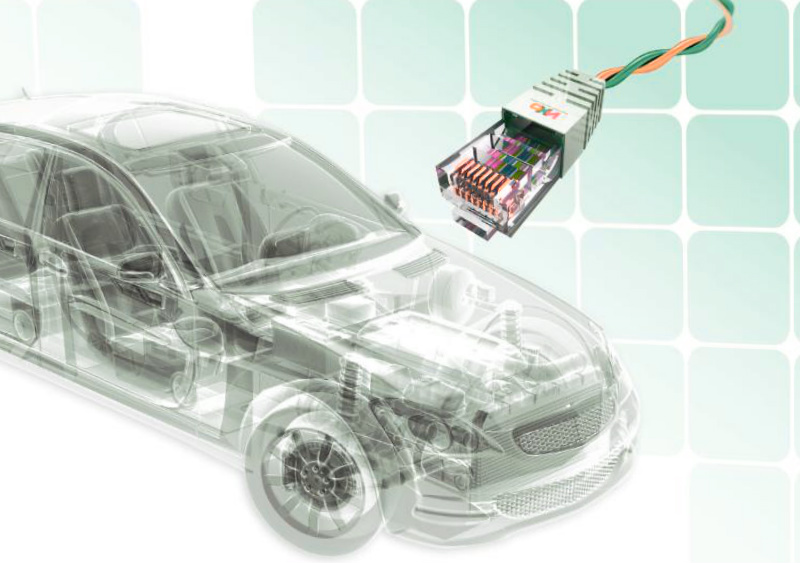China's Automotive Landscape: The Struggles And Strategies Of Premium Automakers

Table of Contents
Intense Competition and Market Saturation in China's Premium Car Segment
The Chinese premium car segment is fiercely competitive. Established international players face a formidable challenge from the rapid rise of domestic brands and a rapidly evolving consumer landscape.
Established Domestic Brands
Chinese automakers like BYD, Nio, and Xpeng are no longer niche players. They are aggressively challenging established premium brands with technologically advanced vehicles and competitive pricing.
- BYD's success: BYD's electric vehicles, particularly the Han and Tang models, have captured significant market share, directly competing with established luxury brands.
- Nio's innovation: Nio's focus on battery swapping technology and a premium user experience has attracted a loyal following amongst tech-savvy Chinese consumers.
- Xpeng's smart features: Xpeng's vehicles, known for their advanced autonomous driving capabilities, are appealing to a younger generation of Chinese buyers.
These domestic brands are leveraging technological advancements, such as advanced driver-assistance systems (ADAS) and connected car features, and employing aggressive pricing strategies to gain market share. Their success is directly impacting the market share and profitability of international premium brands.
Price Wars and Discounting
The intense competition has led to price wars and substantial discounting amongst premium automakers. International brands are often forced to reduce prices to remain competitive, impacting profit margins.
- Examples of price cuts: Many international premium brands have offered significant discounts and promotional offers on their vehicles in China to match the pricing of domestic competitors.
- Impact on brand image: Aggressive discounting can negatively affect the perception of brand value and long-term profitability. Maintaining a premium brand image while competing on price is a delicate balancing act.
Consumer Preferences and Shifting Demands
Chinese consumer preferences are dynamic and sophisticated. Buyers are increasingly focused on technology, luxury features, and brand image, heavily influenced by online reviews and social media.
- Technology is key: Consumers demand advanced technology features, including large touchscreens, connected car services, and advanced driver-assistance systems.
- EV adoption: The demand for electric vehicles (EVs) and hybrid models is rapidly growing, driven by government incentives and increasing environmental awareness.
- Social influence: Online reviews and social media endorsements play a crucial role in shaping consumer perception and purchasing decisions.
Navigating Regulatory Hurdles and Government Policies
The Chinese automotive market is subject to stringent regulations and government policies that present significant challenges for premium automakers.
Stringent Emission Standards and Environmental Regulations
China's commitment to reducing emissions has resulted in increasingly strict environmental regulations. Premium automakers must invest heavily to meet these targets.
- Meeting emission targets: Compliance with stringent emission standards requires significant investments in research and development and the adoption of cleaner technologies.
- Government incentives and penalties: The Chinese government offers incentives for manufacturers producing environmentally friendly vehicles but also imposes penalties for non-compliance.
Import Tariffs and Trade Policies
Import tariffs and other trade policies directly impact the pricing and competitiveness of imported premium vehicles.
- Tariff impact on pricing: Import tariffs increase the cost of imported vehicles, making them less competitive compared to domestically produced models.
- Trade negotiations: Trade agreements and negotiations significantly influence the automotive sector's dynamics and the strategies employed by automakers.
Localization Strategies and Joint Ventures
Localization is crucial for success in the Chinese market. Many premium automakers have established joint ventures or localized production facilities.
- Advantages of localization: Localization reduces import costs, enhances responsiveness to local market demands, and strengthens brand relationships.
- Challenges of joint ventures: Navigating joint venture partnerships requires careful consideration of cultural differences, operational complexities, and intellectual property protection.
Successful Strategies for Premium Automakers in China
Successfully navigating China's automotive landscape requires strategic adaptations and innovative approaches.
Tailored Products and Localized Marketing
Premium automakers need to offer products and marketing campaigns tailored to the specific preferences of Chinese consumers.
- Product adaptation: Adapting vehicle features, designs, and specifications to align with local tastes and preferences is crucial.
- Localized marketing: Marketing campaigns must resonate with the cultural nuances and communication styles of the target audience.
Investment in R&D and Technological Innovation
Investment in research and development, particularly in areas like electric vehicles and autonomous driving, is essential for staying competitive.
- R&D investment: Premium automakers are investing heavily in R&D facilities and collaborations with Chinese technology companies.
- Technological leadership: Demonstrating technological leadership in areas like EVs and autonomous driving is crucial for attracting tech-savvy Chinese consumers.
Building Strong Dealer Networks and After-Sales Service
A robust dealer network and exceptional customer service are critical for building brand loyalty and ensuring customer satisfaction.
- Dealer network expansion: Establishing a comprehensive and efficient dealer network is essential for reaching customers across China.
- After-sales service: Providing high-quality and localized after-sales service and support is crucial for building customer trust and loyalty.
Conclusion
China's automotive landscape presents both immense opportunities and significant challenges for premium automakers. Success hinges on understanding and adapting to the unique characteristics of this market, including intense competition from domestic brands, stringent regulations, and evolving consumer preferences. The key takeaways are the importance of localization, technological innovation, and a customer-centric approach. To navigate this complex landscape successfully, premium automakers must prioritize tailored products, localized marketing, and robust after-sales support. To learn more about specific brand strategies and the ongoing evolution of China's automotive landscape, further research into industry reports and market analyses is encouraged. Delving deeper into these resources will provide a richer understanding of the complexities and dynamism of China's automotive market.

Featured Posts
-
 Top Wireless Headphones Refinements And Upgrades
May 20, 2025
Top Wireless Headphones Refinements And Upgrades
May 20, 2025 -
 Tennisistka Mirra Andreeva Biografiya Pobedy I Porazheniya
May 20, 2025
Tennisistka Mirra Andreeva Biografiya Pobedy I Porazheniya
May 20, 2025 -
 Fenerbahce De Talisca Tartismasinin Ardindan Tadic Transferi
May 20, 2025
Fenerbahce De Talisca Tartismasinin Ardindan Tadic Transferi
May 20, 2025 -
 Manchester Uniteds Pursuit Of Premier League Forward Newcastles Competition
May 20, 2025
Manchester Uniteds Pursuit Of Premier League Forward Newcastles Competition
May 20, 2025 -
 Get The Answers Nyt Mini Crossword March 16 2025
May 20, 2025
Get The Answers Nyt Mini Crossword March 16 2025
May 20, 2025
Latest Posts
-
 Paulina Gretzky Topless Selfie And Other Hot Photos Revealed
May 20, 2025
Paulina Gretzky Topless Selfie And Other Hot Photos Revealed
May 20, 2025 -
 Paulina Gretzkys Hottest Photos A Revealing Look
May 20, 2025
Paulina Gretzkys Hottest Photos A Revealing Look
May 20, 2025 -
 Paulina Gretzky Dustin Johnsons Wife Career And Family Life
May 20, 2025
Paulina Gretzky Dustin Johnsons Wife Career And Family Life
May 20, 2025 -
 Wayne Gretzkys Daughter Paulinas Playdate Mini Dress
May 20, 2025
Wayne Gretzkys Daughter Paulinas Playdate Mini Dress
May 20, 2025 -
 Paulina Gretzkys Playdate Fashion Mini Dress Details
May 20, 2025
Paulina Gretzkys Playdate Fashion Mini Dress Details
May 20, 2025
